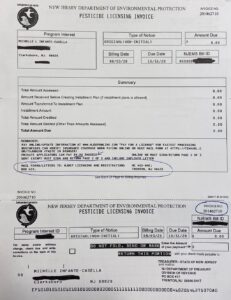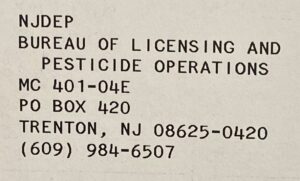Hemant Gohil, Gary Pavlis, and Daniel Ward
A Cabernet Franc (CF) wine tasting and evaluation workshop for winemakers was held on November 25, 2019, at Unionville Vineyards, located in Ringoes. Cabernet Franc (CF) is one of the most suitable Vitis vinifera varieties for New Jersey with high-quality wine production, for both north and south New Jersey1. It is also one of the best red varieties for New Jersey in terms of consistency in ripening. It can be easily adapted in the winery for Rosé, dry still varietals, and in red wine blends. The responses to a survey sent two weeks before the event, formed the basis of discussion at the workshop. Winemakers also described how they accomplished each of their wines. [Read more…]
 Rutgers Cooperative Extension Agricultural Agents have been receiving questions from farmers on what to do with the renewal applications they recently received from
Rutgers Cooperative Extension Agricultural Agents have been receiving questions from farmers on what to do with the renewal applications they recently received from 

